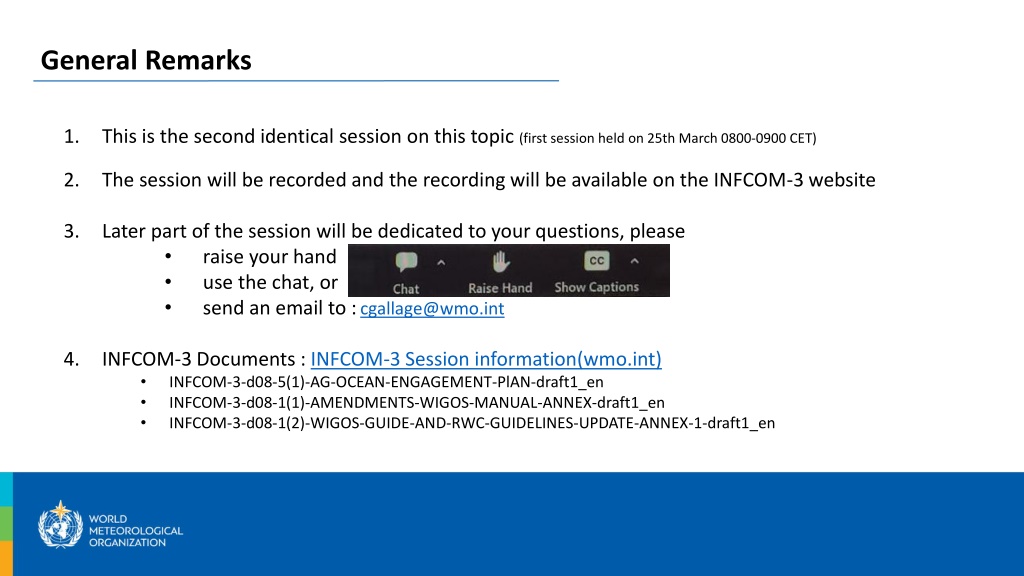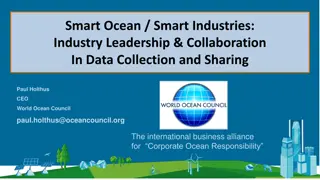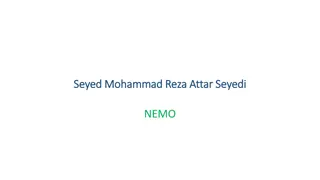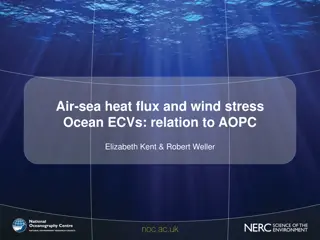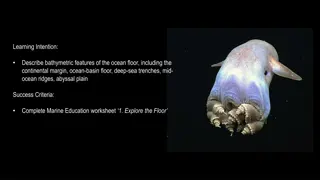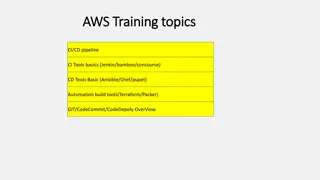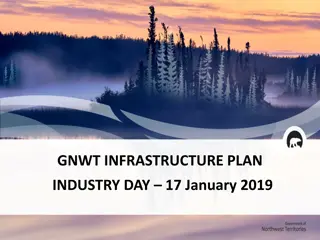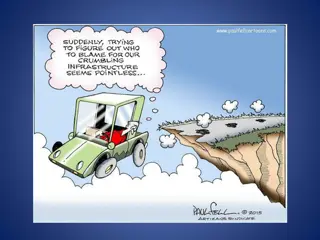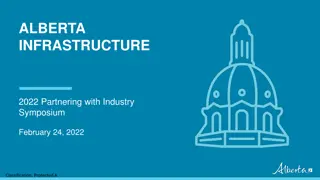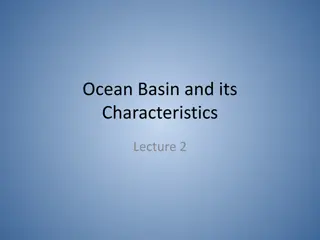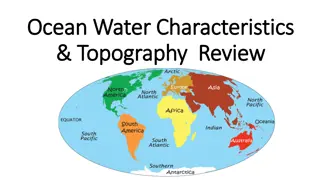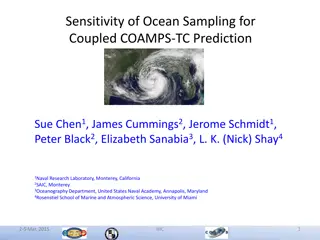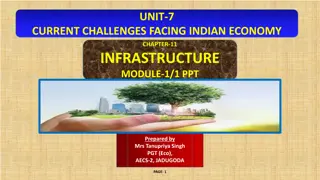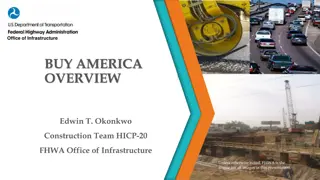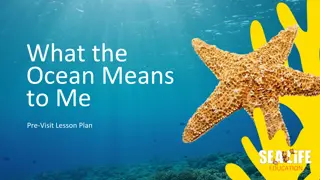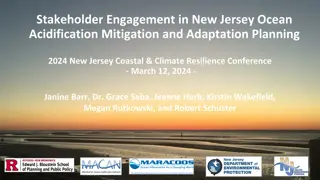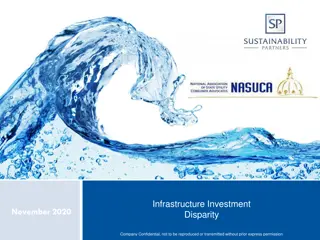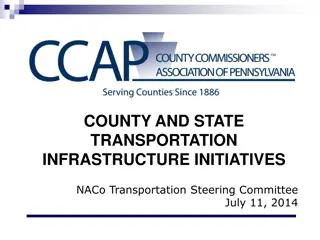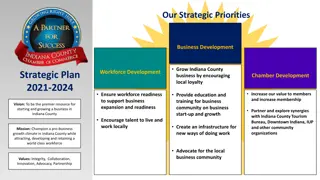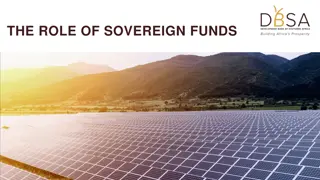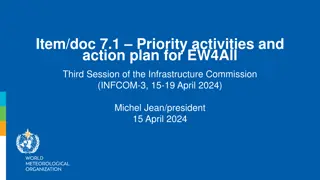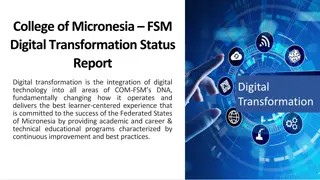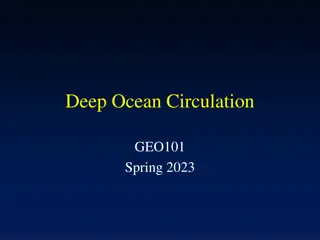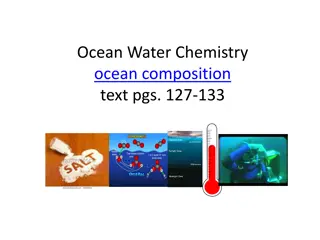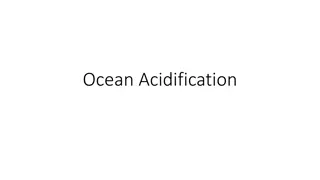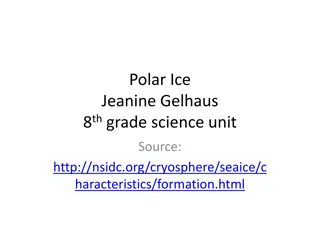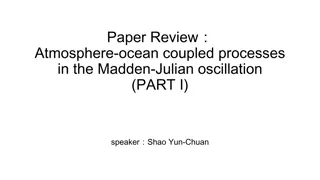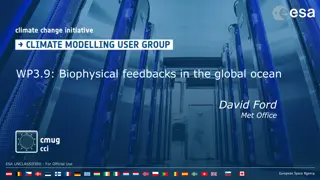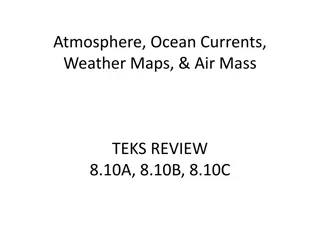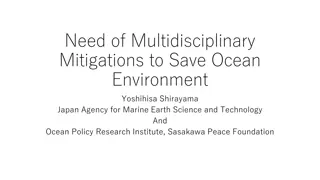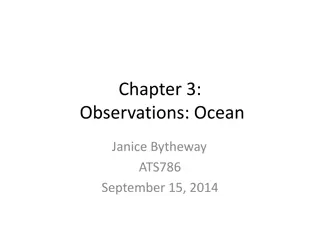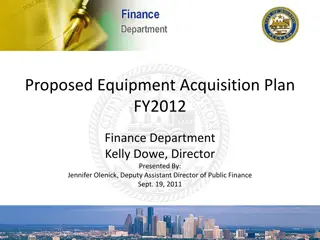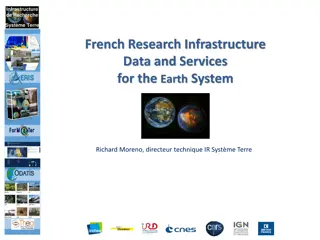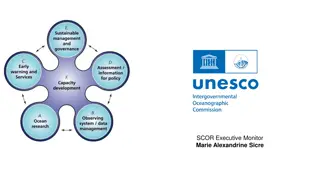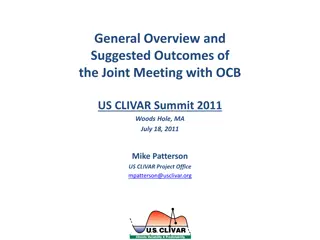AG-Ocean Engagement Plan: Enhancing Collaboration for Ocean Infrastructure Development
The AG-Ocean Engagement Plan aims to establish long-term working arrangements between WMO and the ocean infrastructure community to advance Earth System Approaches. AG-Ocean focuses on advisory roles, prioritizing key areas for impact. The plan identifies observations, data, and prediction as essential themes, emphasizing stakeholder engagement and support in enhancing global capabilities.
Download Presentation

Please find below an Image/Link to download the presentation.
The content on the website is provided AS IS for your information and personal use only. It may not be sold, licensed, or shared on other websites without obtaining consent from the author. Download presentation by click this link. If you encounter any issues during the download, it is possible that the publisher has removed the file from their server.
E N D
Presentation Transcript
General Remarks 1. This is the second identical session on this topic (first session held on 25th March 0800-0900 CET) 2. The session will be recorded and the recording will be available on the INFCOM-3 website 3. Later part of the session will be dedicated to your questions, please raise your hand use the chat, or send an email to :cgallage@wmo.int 4. INFCOM-3 Documents : INFCOM-3 Session information(wmo.int) INFCOM-3-d08-5(1)-AG-OCEAN-ENGAGEMENT-PlAN-draft1_en INFCOM-3-d08-1(1)-AMENDMENTS-WIGOS-MANUAL-ANNEX-draft1_en INFCOM-3-d08-1(2)-WIGOS-GUIDE-AND-RWC-GUIDELINES-UPDATE-ANNEX-1-draft1_en
Advisory Group on the Ocean (AG-Ocean) INFCOM-3-d08-5(1)-AG-OCEAN-ENGAGEMENT-PLAN-draft1_en Myrian Rene Tamayo Infantes Vice-Chair, AG-Ocean Peruvian Navy Peru Dr Boris Kelly-Gerreyn Chair, AG-Ocean Bureau of Meteorology Australia Katy Hill Vice-Chair, AG-Ocean National Oceanography Centre, UK Pre INFCOM-3, Ocean Information Session (25th and 27th March 2024)
AG-Ocean INFCOM-2 session approved the recommendations of the former Study Group on Ocean Observations and Infrastructure Systems (SG-OOIS) to establish AG-Ocean to: o Build connections between WMO and ocean infrastructure across observations, data and prediction systems o Enable WMO to draw on and contribute to ocean capability in advancing Earth System Approaches to meet its strategic objectives o Identify Gaps and develop strategies to address them. Tearms of Reference
AG-Ocean Clarity on Mission Our role is advisory We advocate, advise and champion and we do NOT implement We can't address everything stakeholders want us to do We focus on key priority areas where we can make a difference Where connections are strong, we acknowledge Where connections are weak or missing, we pay attention We will work closely with our stakeholders to ensure our advice is based on the high(est) priorities keep them informed, engaged and supportive
The Engagement Plan Engagement Plan is the FIRST engagement plan which will be reviewed every ~1-2 years for impact and relevance Purpose: Articulates priority focus areas based on issue, gap and opportunity analysis drawing on key strategic documents, knowledge and expertise within AG- Ocean, and stakeholder input. Goal: to help establish long-term, operational working arrangements between the WMO and the ocean infrastructure community for the benefit of all nations. Three themes : Observations, Data and Prediction.
Engagement Plan 3 themes Observations, Data sharing, Prediction 12 focus areas aligned to WMO strategy and JCB strategy 23 Recommended actions (others lead but AG-Ocean initiates and advocates) Prior to approval Refinement via more consultation After approval - Implement : 2024-2027
The Engagement Plan Focus Areas Observations (Lead: Ann-Christine Zinkann) Assessment of GOOS and WMO connections Synthesis of observing system requirements and evaluation activities Ocean in GBON Implementation Leverage regional structures to enhance regional implementation Data (Lead: Axel Andersson) Governance, coordination and support structures Connect ocean and WMO metadata tools Implementation of WIS 2.0 for ocean data Integration of MCDS into WMO and IOC structures Prediction (Lead: Elisabeth Remy) Governance, coordination and support structures Observing system evaluation and prediction requirements Responding to authoritative guidance on requirements for ocean prediction products Ocean analysis and forecasts evaluation
Who will implement? A range of entities drawn from WMO, IOC, GOOS and UN Ocean Decade as proposed in the Engagement Plan
AG Ocean Consultations TO BE CONSULTED CONSULTED SERCOM President DCO Observation INFCOM President SC-MMO and other priority SCs DCO Data Sharing SC-ON/SC-MINT ETOOFS & OceanPredict DCC Ocean Prediction SC-ESMP (WIPPS) Research Board G3W SC-IMT JCB IOCCP GOOS IODE OOPC OCG
Draft Decision 8.5(1)/1 (INFCOM-3) The Commission for Observation, Infrastructure and Information Systems decides: (1) To approve the Engagement Plan prepared by the Advisory Group on the Ocean (AG-Ocean) and its applicable recommendations; (2) To request the Management Group of the Commission for Observation, Infrastructure and Information Systems (INFCOM) and Standing Committees to assist AG-Ocean to implement relevant recommendations; (3) To request the president of INFCOM to consult with the Commission for Weather, Climate, Hydrological, Marine and Related Environmental Services and Applications (SERCOM) and the Research Board and to engage with stakeholders listed in the Engagement Plan provided in the annex to assist with implementing relevant recommendations, bringing any governance-related recommendations to the Joint WMO-IOC Collaborative Board; (4) To authorize the president of INFCOM to approve, as required, updates to the Engagement Plan of the AG-Ocean during the intersessional period.
Global Basic Observing Network Ocean Integration Fraser Cunningham TT-GBON Next Ocean representative Marine Observations Manager UK Met Office Pre INFCOM-3, Ocean Information Session (25th and 27th March 2024)
Global Basic Observing Network (GBON) - One of the WMO flagship activities - Fundamental element of WMO Integrated Global Observing System (WIGOS) - Improves the availability of the most essential surface-based data, providing direct positive impact on the quality of weather forecasts - Technical Regulations for GBON came into force on 1 January 2023. The Infrastructure Commission is tasked to develop technical guidelines, processes and procedures. GBON - Global Basic Observing Network | World Meteorological Organization (wmo.int)
GBON Requirements Type of observing station HR VR Obs Cycle Variables Other Requirements Surface land stations 200km 100km n/a 1h SLP, T, U, Wind, precip, snow depth Exchanged in real time through WIS2 Upper air stations operated from land 500km 200km 100m 2/24h T, U, wind Up to 30 hPa, exchanged in real time through WIS- 2 Subset of upper air stations 1000km 100m 24h T, U, wind Up to 10hPa, Exchanged in real time through WIS2 Surface marine stations in EEZs 500km n/a 1h SLP, SST Exchanged in real time through WIS2 Upper air stations operated in EEZs 1000km 100m 2/24h T, U, wind Up to 30 hPa, exchanged in real time through WIS2 Aircraft data 100km at flight level 300m for profiles 1h T, U, wind Data exchange per licensing agreement Remote sensing profiler observations Where available 100m 1h T, U, wind n/a
Principles Purpose: to improve global NWP and climate reanalysis Compliance: technology-free but technology aware Guidance: easily applicable by Members to plan for its commitment and simple metrics for compliance for reporting to Members Marine-based observations are different from land-based observations Platform types: fixed platforms (moorings), freely-drifting platforms (surface drifters), or moving platforms (ships and drones) Nature of observations: freely-drifting and moving platforms often drift in and out of EEZs High seas: Area beyond national jurisdiction, is non-appropriable and is the common heritage of mankind
GBON Ocean Scenarios Scenario 1: "Everything in your EEZ Analogue to land compliance monitoring Scenario 2: Global ocean "Everything you operate that started in your EEZ" Variant 1: All observations initially deployed within one's EEZ regardless of ownership, counted toward Member compliance. Variant 2: Observations made by the Member anywhere in the ocean (i.e., open ocean) will be counted toward Member compliance. Scenario 3: Hybrid / Flexible All fixed platform GBON-assigned observing contributions in a Members' EEZ and All mobile platforms deployed by a Member in their EEZ
GBON Marine Gap analysis based on SLP observations in June 2023 The designations employed and the presentation of material on this map do not imply the expression of any opinion whatsoever on the part of the Secretariat of the World Meteorological Organization concerning the legal status of any country, territory, city or area or of its authorities, or concerning the delimitation of its frontiers or boundaries.
WIGOS Manual (WMO-No. 1160) 3.2.2.22bis Members should operate GBON stations/platforms in areas of global commons including the High Seas and the Antarctic, according to their ability. INFCOM-3-d08-1(1)-AMENDMENTS-WIGOS-MANUAL-ANNEX-draft1_en
Guide to the WMO Integrated Global Observing System (WMO-No.1165) 11.2.4 For Members whose surface area of the Exclusive Economic Zone is significantly larger than the land surface area, the GBON horizontal resolution requirement for the surface marine stations in the Exclusive Economic Zones will be applied for observations from both, surface land and surface marine observing stations/ platforms over the entirety of the area (that is, land surface area and EEZ surface area). 11.3.1 All marine stations/platforms registered in OSCAR/Surface that report observations of the variables defined in provisions 3.2.2.10 and 3.2.2.15 are considered GBON stations/platforms, due to the short life span and moving nature of many of the observing platforms.
Guide to the WMO Integrated Global Observing System (WMO-No.1165) contd. 11.4.2.2 A marine meteorological observing station/platform is found as GBON compliant if all three criteria (SSL 1 SSL 3) from Table 11.2 are met for at least the measurement of sea level pressure. Table 11.2. Compliance criteria for GBON surface land and marine meteorological observing station/platform Mark Name Description Criteria No. of received monthly reportsb/ (Days per month x 24c) No. of late reportsd/ (Days per month x 24) No. of rejected monthly reportse/ (Days per month x 24) Monthly availability (%) 80% SSL1a Timeliness (%) < 5% SSL 2 Monthly quality (%) < 5% SSL 3
Guide to the WMO Integrated Global Observing System (WMO-No.1165) contd. M3: For surface marine meteorological GBON compliant stations (M), in Exclusive Economic Zones. The number of Member s surface marine GBON compliant stations (M)* in Exclusive Economic Zones, is greater than, or equal to, the required number of surface marine GBON stations (RM) from GGGA: M R * This number includes all contributions from all Members having stations/platforms within the EEZ of the Member in question INFCOM-3-d08-1(2)-WIGOS-GUIDE-AND-RWC-GUIDELINES-UPDATE-ANNEX-1-draft1_en
Thank you. wmo.int
